Sorted by date Results 1 - 25 of 314

On December 26, 1944, amid the bitter cold and chaos of the Ardennes Forest, General George S. Patton's Third Army achieved one of the most celebrated feats of World War II: the relief of Bastogne. After days of relentless German assault, the encircled U.S. 101st Airborne Division and other units holding the Belgian town were finally reached by American armor, ending a siege that had become a symbol of Allied grit and defiance. The breakthrough marked a critical turning point in the Battle of...

Crossing the Rubicon, a common phrase used to describe a point of no return, is typically traced back to Julius Caesar’s crossing of the river Rubicon in January 49 BC, initiating the Roman Civil War. An analogy can be drawn between the actions of Caesar and those of Lincoln in his call for 75,000 “volunteers” from each State to invade the seven States that voted to secede from what they understood to be a voluntary union. After Lincoln resupplied Fort Sumter (an act of war), he got the antic...

The fifty-third Annual Thanksgiving Pow Wow held by the Poarch Creek Indians is scheduled this year for Thursday and Friday (November 27th and 28th, 2025). And ahead of their famous Annual Thanksgiving Day Pow Wow, Alabama Public Television is airing the Emmy Award winning documentary about the Poarch Creek Indians entitled, "The Forgotten Creeks". Produced by Jacksonville State University's Longleaf Studios with Seth Johnson as the executive producer, the documentary is just shy of an hour in...
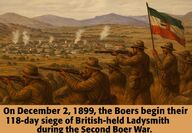
On December 2, 1899, the dusty hills of Natal, South Africa, echoed with the thunder of Boer artillery as the 118-day Siege of Ladysmith began-a pivotal moment in the Second Boer War that would test the endurance of British troops and reshape imperial strategy. The Backdrop: Empire, Gold, and Resistance The Second Boer War (1899–1902) was not just a colonial skirmish-it was a clash of empires and ideals. The British Empire, seeking to consolidate control over South Africa's gold-rich t...

On December 7, 2025, Americans across the country pause to honor the 84th anniversary of the attack on Pearl Harbor-a day that forever altered the course of history and galvanized a nation into action. Known as National Pearl Harbor Remembrance Day, this solemn occasion commemorates the 2,403 American lives lost in the surprise military strike by the Empire of Japan on the U.S. naval base at Pearl Harbor, Hawaii, in 1941. A Day That Lives in Infamy At 7:55 a.m. on that fateful Sunday morning,...

December 8, 1991, BELARUS - Russian President Boris Yeltsin, Ukrainian President Leonid Kravchuk, and Belarusian Parliament Chairman Stanislav Shushkevich met in a secluded government dacha in the Belovezh Forest of Belarus. The meeting was initially shrouded in secrecy, but its outcome would reverberate across the globe. The three leaders signed what became known as the Belovezha Accords, a treaty that declared the USSR had ceased to exist as a subject of international law and geopolitical...

By mid-1775, tensions in Virginia mirrored those in Massachusetts. Royal Governor John Murray, Earl of Dunmore, attempted to suppress rebellion by seizing gunpowder stores and raising forces loyal to the Crown. Among his recruits were Loyalist militias and the controversial Ethiopian Regiment, composed of enslaved people promised freedom for military service. The strategic focus soon shifted to Norfolk, a Loyalist stronghold. The only reliable land approach to Norfolk was across the Great Bridge...

On December 10, 1941, the Royal Navy suffered one of its most devastating losses of World War II when HMS Prince of Wales and HMS Repulse were sunk by Japanese torpedo bombers off the coast of Malaya. This marked the first time in history that capital ships were destroyed solely by air power while at sea, signaling the end of the battleship era. Background: Britain's Far Eastern Gamble - In late 1941, Japan launched a sweeping offensive across Southeast Asia, seeking control of vital resources...
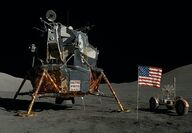
On December 11, 1972, Apollo 17 became the sixth and final mission of NASA's Apollo program to successfully land astronauts on the Moon. This historic event marked the culmination of a bold era in space exploration and the end of the United States' manned lunar landings. Commanded by Eugene Cernan, with Lunar Module Pilot Harrison Schmitt and Command Module Pilot Ronald Evans, Apollo 17 was notable for several reasons. It was the first mission to include a professional scientist-Schmitt, a geolo...

Everett Collection // Shutterstock Most common jobs 150 years ago in Alabama At the time of the American Revolution, most of the job market in the U.S. revolved around agriculture or food acquisition in some way. Many individuals and communities farmed for subsistence, not even growing enough to have an excess to sell for profits. As the fledgling country grew, so did its economy, springing forth during the Industrial Revolution of the late 1700s and early 1800s, and inexorably shifting the...
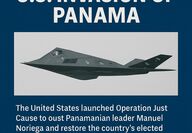
December 20, 1989 - In the early hours of December 20, 1989, the United States launched Operation Just Cause, a large‑scale military invasion of Panama aimed at removing strongman Manuel Noriega from power and restoring the country's elected government. The operation would become one of the most significant U.S. military actions of the late Cold War - and the first to feature the combat use of purpose‑built stealth aircraft. More than 27,000 U.S. troops participated in the invasion, str...

Imagine going to visit a relative in another country and discovering they had things that your own country did not. Not only were goods available for sale, but varieties of food were offered at fair and reasonable prices. People seemed happier in their jobs, and there was a certain vibrancy throughout all strata of society as they enjoyed more autonomy and freedom of movement. Government was less intrusive and more in the background. Law enforcement was more partner than adversary. Imagine furth...

On December 21, 2004, as American troops gathered for lunch inside a large mess tent at Forward Operating Base Marez in Mosul, a suicide bomber slipped inside wearing what appeared to be an Iraqi security forces uniform. Moments later, he detonated an explosive vest in the middle of the crowded dining hall, killing 22 people and wounding more than 70. It remains the single deadliest suicide attack on American forces during the Iraq War. The bombing struck at the heart of the main U.S. military a...

MONTGOMERY - Seventy years ago, on December 1, 1955, a quiet but resolute seamstress named Rosa Parks boarded a Montgomery city bus and changed the course of American history. Her refusal to give up her seat to a white passenger became the spark that ignited the Montgomery Bus Boycott, a 381-day protest that launched the modern Civil Rights Movement and elevated a young Rev. Dr. Martin Luther King Jr. to national prominence. Today, as Montgomery and the nation commemorate Parks' courageous act,...

On November 30, 1864, the quiet town of Franklin, Tennessee, became the site of one of the most ferocious and tragic battles of the American Civil War. In a span of just five hours, the Confederate Army of Tennessee, under the command of General John Bell Hood, launched a massive frontal assault against fortified Union positions led by Major General John McAllister Schofield. The result was a devastating Confederate defeat-one that cost Hood nearly a third of his army and six of his generals,...
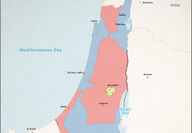
On the evening of November 29, 1947, the United Nations General Assembly voted to adopt Resolution 181 (II), a landmark decision that proposed the partition of Mandatory Palestine into two independent states-one Jewish and one Arab-with Jerusalem designated as a special international zone due to its religious significance. The resolution passed with 33 votes in favor, 13 against, and 10 abstentions, reflecting deep global divisions over the future of the region. The Partition Plan The...

On November 28, 1943, the Tehran Conference brought together U.S. President Franklin D. Roosevelt, British Prime Minister Winston Churchill, and Soviet Premier Joseph Stalin for the first time in person. Held in Tehran, Iran, this pivotal World War II summit shaped the Allied strategy for defeating Nazi Germany and laid the groundwork for the postwar world. The First Meeting of the "Big Three" The Tehran Conference, codenamed "Eureka," was the first time that all three of the leaders of the thre...

On November 27, 1965, the Pentagon advised President Lyndon B. Johnson that the Vietnam War would require a dramatic escalation-from 120,000 to 400,000 American troops-to achieve its strategic objectives. This moment marked a turning point in U.S. involvement, setting the stage for full-scale military commitment and deepening national debate. A Pivotal Moment in the Vietnam War By late 1965, the Vietnam War had shifted from a limited advisory mission to a full-blown conflict. American troop...

On November 17, 1939, a brutal crackdown by Nazi forces in occupied Czechoslovakia led to the execution of nine student leaders, the closure of all Czech universities, and the deportation of over 1,200 students to concentration camps. This tragic event, sparked by the death of medical student Jan Opletal, became a defining moment in student activism and resistance. Today, it is commemorated globally as International Students' Day, honoring the courage, sacrifice, and enduring voice of students...

On November 16, 1943, American bombers crippled Nazi Germany's nuclear ambitions by striking the Vemork heavy water plant in Norway-a pivotal moment in World War II's secret atomic race. Strategic Target: Vemork's Role in Nazi Nuclear Research The Vemork hydroelectric power station, located near Rjukan in Telemark County, Norway, was the world's first industrial-scale producer of heavy water (deuterium oxide)-a critical component in nuclear reactor moderation. Under Nazi occupation since 1940,...

On November 15, 1533, Francisco Pizarro triumphantly entered Cuzco, the heart of the Inca Empire, marking a decisive moment in the Spanish conquest of Peru. His arrival was not merely a military feat-it was a strategic masterstroke that reshaped the destiny of the Andes. The Road to Cuzco: Strategy, Resolve, and Opportunity Francisco Pizarro's march to Cuzco was the culmination of years of daring exploration, calculated diplomacy, and battlefield grit. After capturing and executing...

In November 1775, General Richard Montgomery led Patriot forces in a bold campaign to capture Montreal, marking a pivotal moment in the American Revolutionary War's northern theater. As part of the Continental Army's broader invasion of Canada, Montgomery's assault on Montreal was designed to weaken British control and rally French-speaking Canadians to the revolutionary cause. The operation, though ultimately limited in strategic success, showcased early American military initiative and...
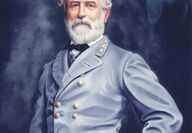
In a rare case of self-inflicted torture, I watched some of Maine Senator Angus King’s questioning of Pete Hegseth, U.S. Secretary of Defense (now War). Various topics were covered, including the renaming of bases. King falsely accused Robert E. Lee of committing treason by resigning from the U.S. Army and siding with his State in 1861. Since King was born in Virginia, one might ask if he really believes that nonsense or if he is just another historical dimwit. Much has been written about L...

November 18 - Forty-seven years ago today, the world awoke to one of the most harrowing tragedies of the 20th century. On November 18, 1978, deep in the Guyanese jungle, a utopian experiment turned into a nightmare as 918 people-members of the Peoples Temple-lost their lives in a mass murder-suicide orchestrated by their leader, Jim Jones. Among the dead were over 270 children and U.S. Congressman Leo J. Ryan, the only sitting member of Congress ever killed in the line of duty. A Cult in the...

On November 19, 1943, one of the lesser-known yet harrowing episodes of the Holocaust unfolded in Lemberg-modern-day Lviv, Ukraine-when Nazi forces liquidated the Janowska concentration camp. In a brutal crackdown following a failed uprising and mass escape attempt, at least 6,000 Jewish prisoners were murdered in a single day. A Camp of Terror Janowska was established in 1941 as a forced labor camp and later became a transit point for Jews being deported to extermination camps like Belzec. Loca...